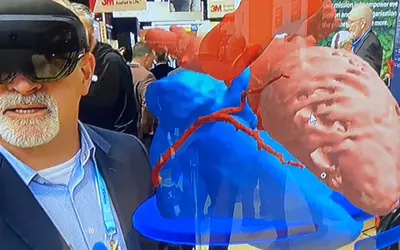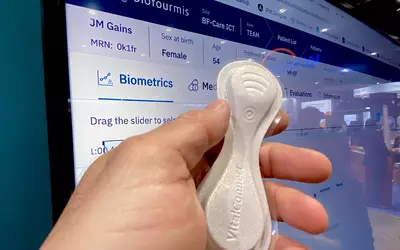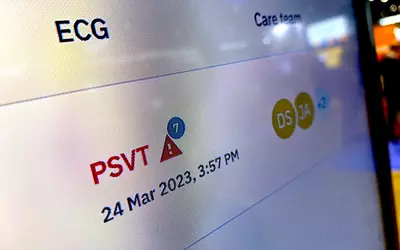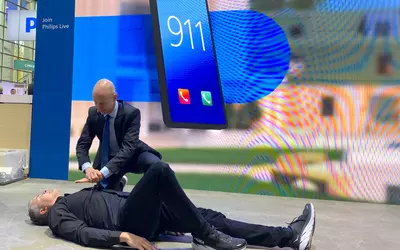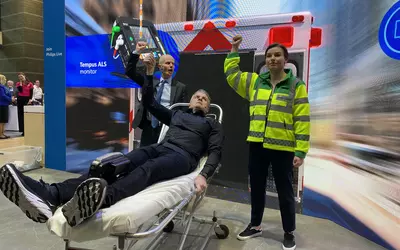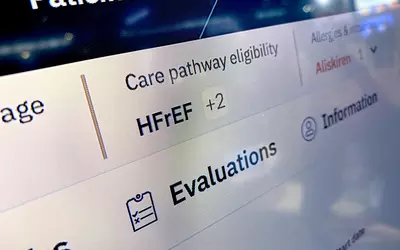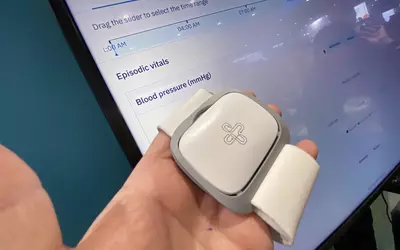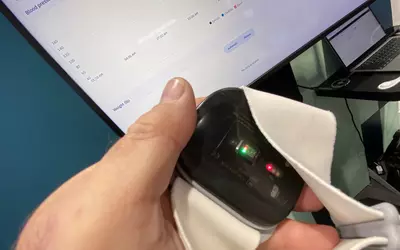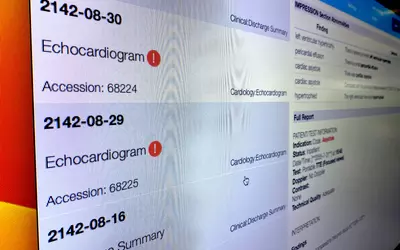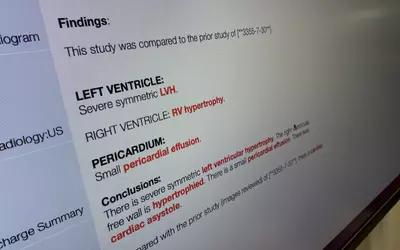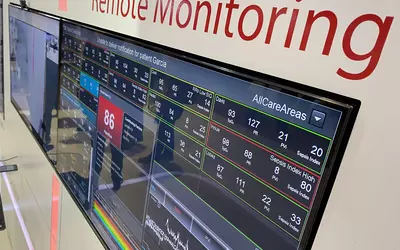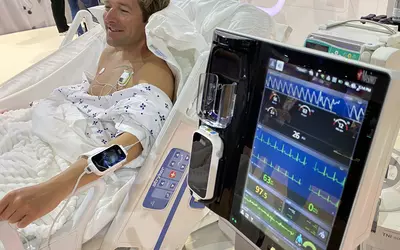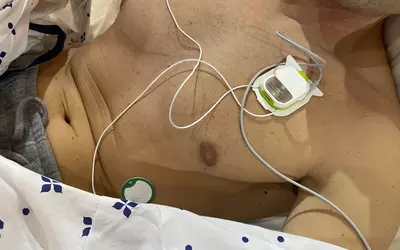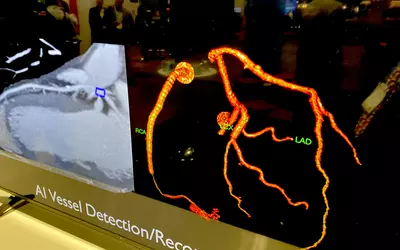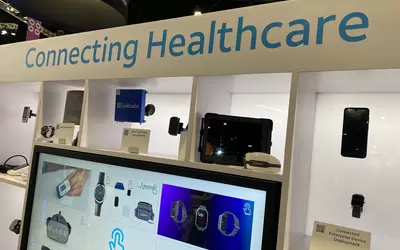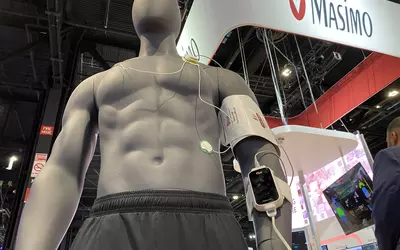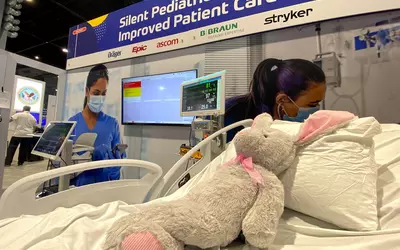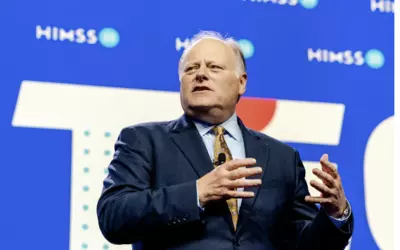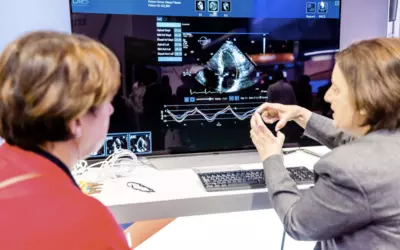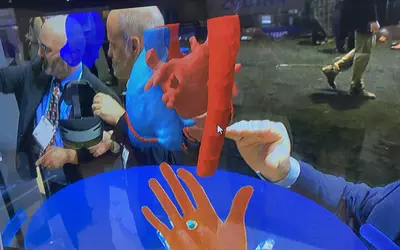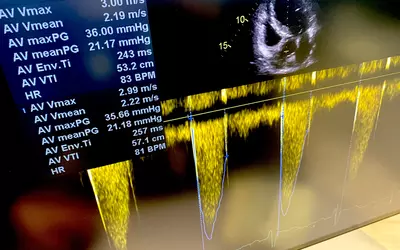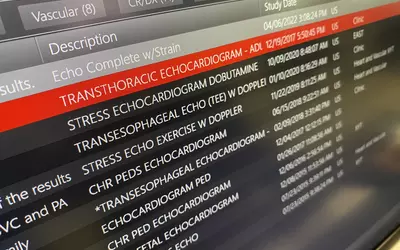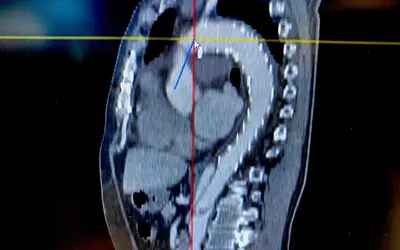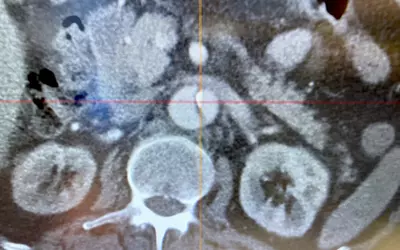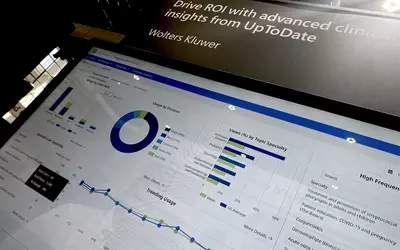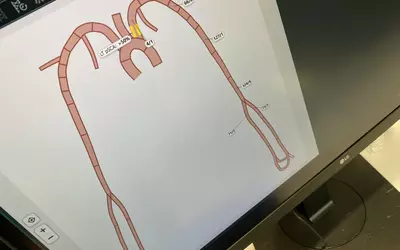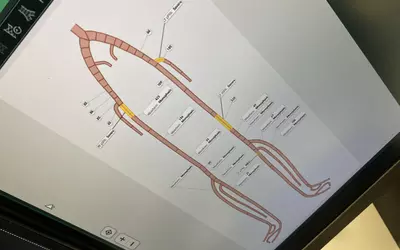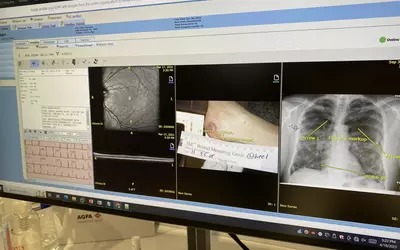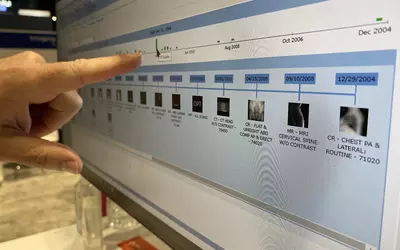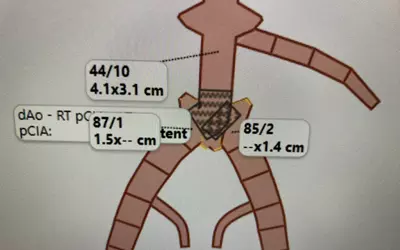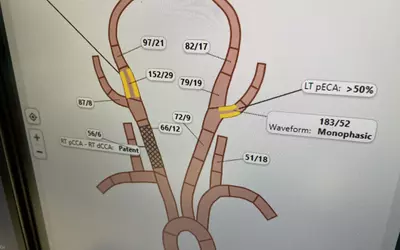PHOTO GALLERY: Cardiac technologies on display at HIMSS 2023
Many new and exciting cardiovascular devices and solutions were on display at the world's largest health informatics conference, the Healthcare Information Management Systems Society (HIMSS) 2023 meeting.
One of the big IT trends seen at the show was remote monitoring telehealth solutions for tracking cardiac patients at home, especially patients with chronic conditions such as heart failure. Other trends on display were wireless in-hospital monitoring, data mining medical records, department data analytics, cardiovascular information system (CVIS) workflow efficiency solutions, the movement to include cardiology in enterprise imaging systems, and the increased use of virtual reality.
A virtual reality (VR) review of a cardiac CT at Microsoft's booth at HIMSS23. The vendor DICOM Director demonstrated its Intravision XR cloud-based, 3D model medical software tool that automates the process of creating 3D models from CT and MRI scans and forming VR files. VR and augmented reality were both seen throughout the show.
A VitalConnect wearable heart monitor and its related remote biometrics monitoring screen in the Biofourmis booth. This type of wearable heart monitor is replacing cumbersome Holter monitors for home monitoring and several vendors now offer remote monitoring for hospitals or provide staffed monitoring services.
Philips Healthcare had one of the most innovative presentations at the show, putting on a performance where one of the speakers drops to the floor and the second speaker begins CPR. The paramedics then arrive with a defibrillator and take them to the hospital. The idea was to highlight the various ways health IT impacts patient care.
An example of a remote monitoring screen for a patient with heart failure with reduced ejection fraction (HFrEF). Using a wearable ECG monitor and wireless scale, patients can be tracked daily to more quickly titrate medication and help keep them out of hospitals and prevent readmissions. This demo took place in the Biofourmis booth.
Cardiovascular information system (CVIS) vendors continue to expand offerings in their reporting systems, including adding modules for new vascular beds. This an interactive subclavian and axillary artery diagram interventional procedural reporting shown by Fujifilm. Similar to coronary tree diagrams common in cath lab reporting systems, as annotations to the vessels are made for lesion blockages or procedures, this automatically transfers text describing the features to the final cath lab report to help speed completion and reduce redundant data entry.
Cardiovascular information system (CVIS) vendors continue to expand offerings in their reporting systems, including adding modules for new vascular beds. This an interactive femoral and illiac artery diagram for peripheral interventional procedural reporting shown by Fujifilm. Similar to coronary tree diagrams common in cath lab reporting systems, as annotations to the vessels are made for lesion blockages or procedures, this automatically transfers text describing the features to the final cath lab report to help speed completion and reduce redundant data entry.
An example of multimodality imaging from various sources being called up together on a universal viewer in the Agfa enterprise imaging system. There have been major efforts across healthcare to consolidate patient data and imaging from numerous, often disconnected health IT systems into one location. Enterprise imaging using a vendor neutral archive is a primary vehicle to enable this type of interoperability.
Related HIMSS Content:
Photos of cardiology related technologies from HIMSS 2023, the world's largest health IT conference
#HIMSS #Cardiology #HealthIT #CVIS #HIMSS23 @HIMSS

Dave Fornell has covered healthcare for more than 17 years, with a focus in cardiology and radiology. Fornell is a 5-time winner of a Jesse H. Neal Award, the most prestigious editorial honors in the field of specialized journalism. The wins included best technical content, best use of social media and best COVID-19 coverage. Fornell was also a three-time Neal finalist for best range of work by a single author. He produces more than 100 editorial videos each year, most of them interviews with key opinion leaders in medicine. He also writes technical articles, covers key trends, conducts video hospital site visits, and is very involved with social media. E-mail: dfornell@innovatehealthcare.com


































